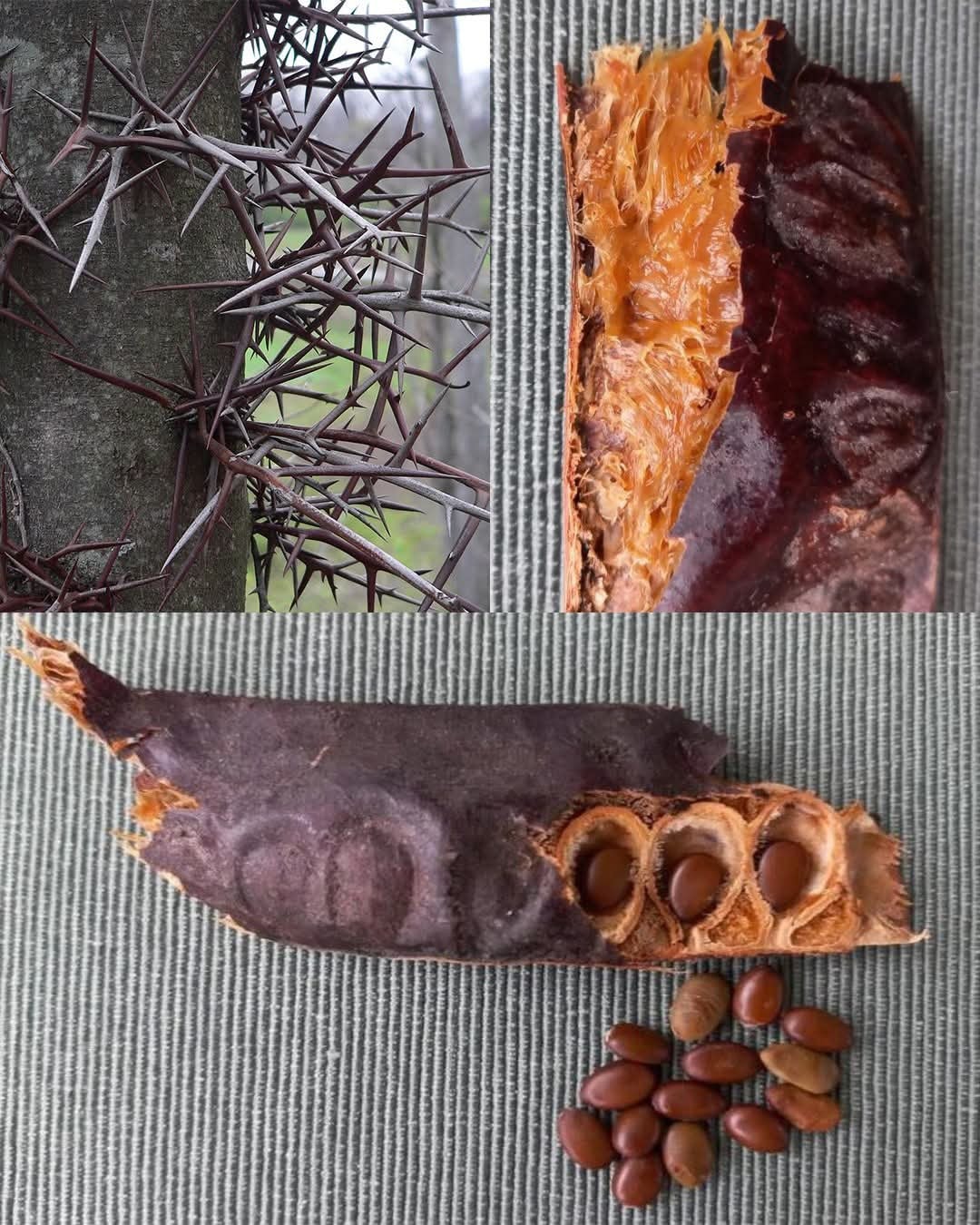The Hidden Power of Honey Locust Pods: Nature’s Sweet Secret You Never Knew About 🌿🍯
When most people think of the Honey Locust tree (Gleditsia triacanthos), they picture its fierce thorns and hardy trunk. But hidden inside its long, dark pods is a natural treasure that has been valued for centuries. Whether you’re a gardener, homesteader, or simply interested in nature’s forgotten gifts, Honey Locust pods might surprise you!
What Is the Honey Locust Tree?
The Honey Locust is a fast-growing, drought-tolerant tree native to North America but now found in warm regions around the world. It stands out because of its:
- Long, sharp thorns along the trunk and branches
- Distinctive, twisted seed pods
- Strong root system
- Ability to thrive with little care
Although the tree looks intimidating, its pods contain something remarkable.
Inside the Pods: Nature’s Hidden Sweetness
Honey Locust pods contain a thick, sweet pulp — often called locust honey — which was used traditionally by Indigenous communities and early settlers. When the pods ripen, they become soft and filled with a caramel-like substance.
Traditional Uses of Honey Locust Pods
For many generations, the pods have been used for:
✔ Natural Sweetener
The sweet pulp was mixed into drinks and porridges, giving a pleasant natural flavor.
✔ Livestock Feed
Farmers often fed the pods to animals like goats, pigs, and cattle. They are rich in:
- Natural sugars
- Fiber
- Vitamins and minerals
This makes the pods a valuable winter feed source.
✔ Pod Flour
Dried pods were ground into flour and added to baked goods in traditional rural kitchens.
✔ Fermentation Ingredient
The natural sugars made Honey Locust pods useful for creating homemade fermented beverages.
✔ Craft & Seed Use
The hard brown seeds inside have been used for beads, crafts, and in some cultures, as a form of counting or game pieces.
Health-Related Information (Important Note)
While Honey Locust pods have traditional uses, always consult reliable sources or professionals before consuming any wild plant.
Proper identification is essential, especially because the Black Locust (Robinia pseudoacacia) is toxic if mistaken for Honey Locust.
How to Grow Honey Locust at Home
Growing your own Honey Locust tree is easier than you think. Here’s how to start from seeds:
1. Collect Mature Pods
Choose dark brown, fully dried pods that rattle when shaken.
2. Extract the Seeds
Open the pod and remove the seeds from the sticky pulp.
3. Scarify the Seeds
Honey Locust seeds have a hard coat.
Lightly nick the seed with a knife or sandpaper.
4. Soak the Seeds
Place the seeds in warm water for 24 hours.
This softens the shell and improves germination.
5. Planting
Plant the seeds 1–2 cm deep in well-draining soil.
6. Sun & Water
- Keep the soil lightly moist
- Place in full sun
- Avoid overwatering
The seedlings will appear in 1–4 weeks depending on temperature.
Why Plant a Honey Locust Tree?
Aside from the fascinating pods, the Honey Locust tree offers many benefits:
🌳 Fast-growing shade tree
🌳 Low maintenance
🌳 Thrives in drought
🌳 Excellent for sandy or poor soils
🌳 Provides animal fodder through the pods
It’s a great option for large gardens, farms, or permaculture systems.
Final Thoughts
Most people overlook the Honey Locust tree or see it only for its thorns. But behind that tough exterior lies a valuable resource: nutrient-rich, sweet pods that have been used for generations.
Whether you want to grow the tree for shade, feed, natural sweetness, or simply out of curiosity, the Honey Locust is one of nature’s hidden gems worth rediscovering.
